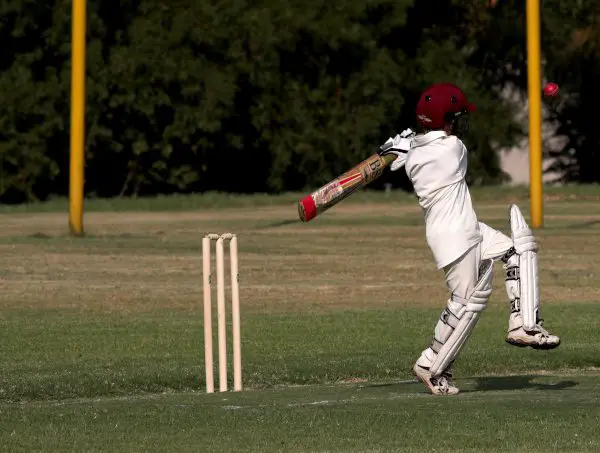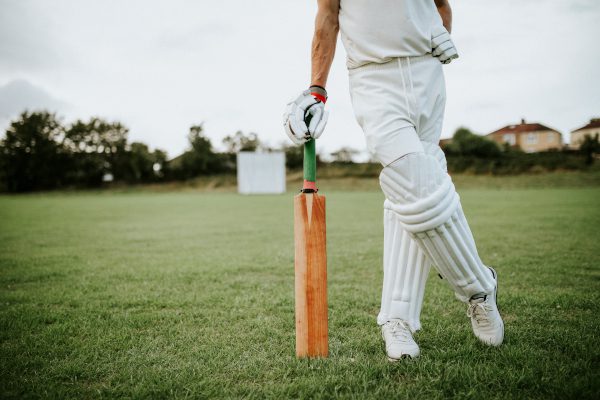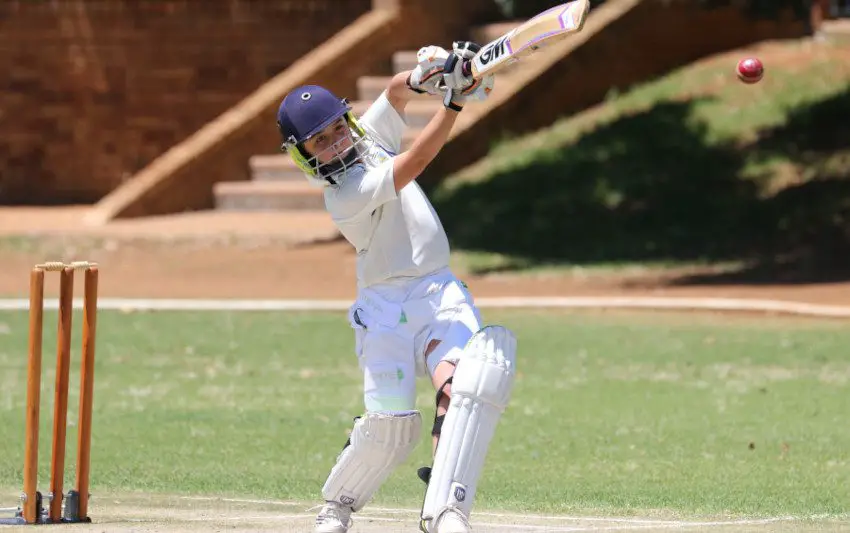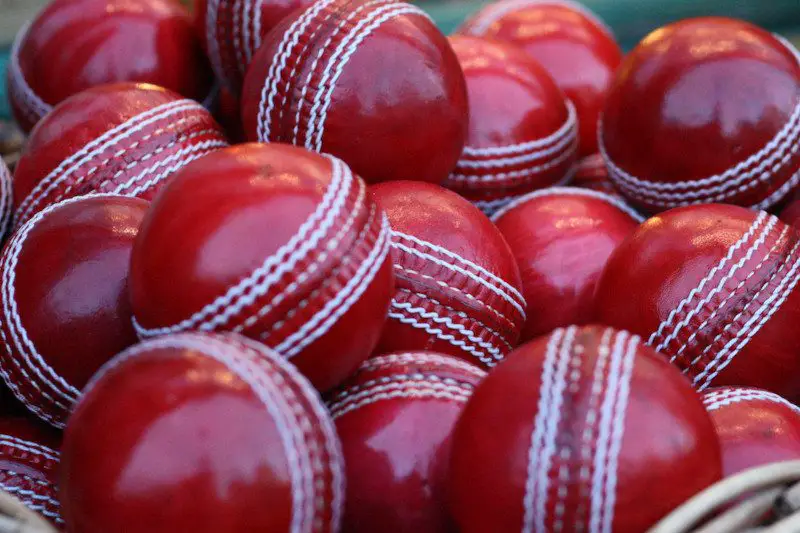Table of Contents
Leg guards or pads are an essential part of a batter and wicketkeeper’s kit. The primary purpose is to protect your legs from the impact of the ball. They offer the most protection below the knee and are secured to the user’s legs using straps (usually Velcro). They are available in a range of sizes from junior to senior and all have a very similar appearance and design. Left and right-handed batters can choose batting pads appropriate to their stances whereas wicketkeepers have a standard fit.
How to Size Cricket Pads?
Before going to a cricket supplier to buy pads into your cricket kit, it is a good idea to know what size pads you are looking for. Choosing the right size is an important factor if you want to increase your comfort. Measure from the centre of your knee to your instep (the part where the tongue from your shoe would be). Once you know this measurement you can choose pads more quickly. Some brands may have some variety in what measurements mean in terms of their sizing, but you will have a general idea. For example, a Kookaburra adult pad measures between 41 and 44cm whereas an Adidas adult pad measures 42 – 44cm. This is especially useful if you are ordering online.
Which Way Do Cricket Pads Go On?
Leg guards obviously protect the user’s legs. These are fitted with 2 or 3 Velcro straps which go around the leg and through a buckle before they are tightened up. A wicketkeeper’s pads will only have 2 straps, an upper and a bottom strap, as the pads are smaller compared to batting pads. The straps can go to the inside or outside of the leg. There is a personal preference here, but the decision should be made on ease of movement. Some cricketers like the plastic buckles to be on the inside of the leg so that there is no chance of straps becoming tangled if they loosen off during use. Some prefer the buckles on the outside of the leg. There is no right on wrong to this as it doesn’t affect the position of the wings (see later in the article for an explanation).

Parts of a Cricket Pad
Whilst leg guards have a similar design and appearance, there are different types of cricket pads for different purposes. Therefore, understanding the different parts will make choosing a pair much easier. Knowing what a seller is referring to or understanding an online listing make the process so much quicker and informative.
Top Hat
This is the part of the leg guards which is above the knee roll. The top hat serves to protect the lower thigh from cricket ball impacts. This is not the thickest part of the pad so it doesn’t offer maximum protection. Some pads have a detachable piece of padding which can be added to increase the level of protection. This part is usually very small on wicketkeeping pads so that movements are not restricted compared to batting pads.
Knee Roll
Two main functions to this part. Firstly, it is there to provide more protection to the knee and the knee cap. This is a vulnerable part of the leg, hence the thicker protection. Its second function is to allow the pad to bend with the user’s knee. The high density foam padding for this part runs horizontally so it is easily identified. However, wicket keeping pads do not have this feature. The keeping pads are smaller so the need for them to flex is not there.
Wings
Batting pads have wings which add additional protection to the outside of the leg. Wrap around protection is what they offer. Both batting and wicketkeeping pads have wings but the size of them is different. The wings on batting pads are generally larger than those on wicketkeeping pads. One thing to look out for is ambidextrous batting pads. They have wings on both sides of the pads which is great for protection but does add extra weight to the leg guards themselves. Ambidextrous are a good option for a general kit bag, but not for a personal purchase.
Face
This is the largest part of the pad and is the part that protects the users’ legs from the ball. This part of the pad is usually made up of a series of vertical sections. There are slight variations in this from brand to brand, but the general design is the same. Each of these sections comprises of a shaft made from cane to make the face rigid and strong. This is surrounded by padded materials like high density foam which serve as a very effective shock absorber. Wicket keeping or batting pads have a very similar design for the face of the pads. This is mainly finished in a white but with shorter format games such as T20, the face can be any colour.
Straps
There have been huge advancements in the straps of cricket leg guards. These used to be made of leather with a buckle on the end to secure them. They resembled mini belts which added to the weight and were also difficult to fit exactly to the leg due to the holes for the buckle. The straps are now made of nylon and have long, Velcro tabs which mean they can be fitted exactly to the person using them. Depending on the brand, there will be 2 or 3 of these per leg guard. Wicket keeping pads used by a wicket keeper only have 2 due to their smaller size.

How Do You Tie Cricket Pads?
Once you have chosen the best batting pads for you, you need to become familiar in how to fasten (tie) them onto your legs and to wear them the correct way. Due to the straps being Velcro, they are easy to secure and with a bit of practise can be fitted quickly.
Before fastening the pad to your lower leg, you must first make sure that you adjust your pants. Make sure they are not rolled up or twisted as this can cause discomfort. Also, make sure the lower part of the pad is pulled over the top of your shoe. This means that the pads won’t rub on your foot. Also, make sure the bottom of the pad goes over the tongue of your shoe. Once they are held in place, open the strap, pull it around your leg and push the end through the buckle. Pull tight enough so the pad doesn’t move around but not so tight that the strap cuts into your leg. Secure with Velcro. Repeat with the remaining straps and your pad is secure.
A simple process and order would be:
- Adjust pants accordingly
- right pad on right leg
- left pad on left leg
New cricket pads sometimes tend to be really noisy and start squeaking with each step. There are a couple of methods to stop your pads squeaking.
After that they have been removed, it is a good idea to fasten the pads up to protect the Velcro and to stop it collecting fluff and dirt. This will affect how secure they fir next time they are used.
Final Thoughts on How to Wear Cricket Pads
Cricket pads are an essential piece of protective equipment. Knowing how to wear them correctly will mean you are more comfortable when running in them or wicketkeeping. Trying pads on before making a purchase is always a good idea due to different brands having different sizes within their size charts. Some cricketers find a particular manufacturer they like and stick with them. This does have the advantage of knowing that the pads fit and are comfortable to wear.
Note, that once you have your cricket pads which you are comfortable with, make sure you give them adequate care by regularly cleaning them.


